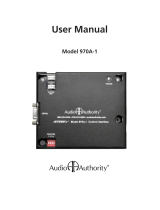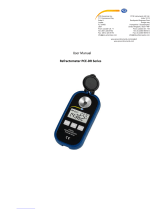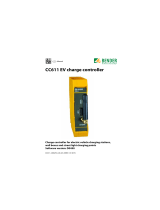SBC PCD7.H104D KV44 S0 pulse counter Mounting Instructions & Users Guide
- Type
- Mounting Instructions & Users Guide
This manual is also suitable for
SBC PCD7.H104D KV44 S0 pulse counter allows you to monitor power consumption in real-time, identify areas of energy waste, and make informed decisions about energy management. It features a compact design for easy installation in various settings. The pulse counter supports Modbus communication, enabling integration with existing systems for centralized monitoring and control. With its wide range of capabilities, the S0 pulse counter is an ideal solution for commercial and industrial applications seeking to optimize energy efficiency.
SBC PCD7.H104D KV44 S0 pulse counter allows you to monitor power consumption in real-time, identify areas of energy waste, and make informed decisions about energy management. It features a compact design for easy installation in various settings. The pulse counter supports Modbus communication, enabling integration with existing systems for centralized monitoring and control. With its wide range of capabilities, the S0 pulse counter is an ideal solution for commercial and industrial applications seeking to optimize energy efficiency.




-
 1
1
-
 2
2
-
 3
3
-
 4
4
SBC PCD7.H104D KV44 S0 pulse counter Mounting Instructions & Users Guide
- Type
- Mounting Instructions & Users Guide
- This manual is also suitable for
SBC PCD7.H104D KV44 S0 pulse counter allows you to monitor power consumption in real-time, identify areas of energy waste, and make informed decisions about energy management. It features a compact design for easy installation in various settings. The pulse counter supports Modbus communication, enabling integration with existing systems for centralized monitoring and control. With its wide range of capabilities, the S0 pulse counter is an ideal solution for commercial and industrial applications seeking to optimize energy efficiency.
Ask a question and I''ll find the answer in the document
Finding information in a document is now easier with AI
in other languages
- italiano: SBC PCD7.H104D KV44 S0 pulse counter
- français: SBC PCD7.H104D KV44 S0 pulse counter
- Deutsch: SBC PCD7.H104D KV44 S0 pulse counter
Related papers
-
SBC PCD7.H104D S0 pulse counter Mounting Instructions & Users Guide
-
SBC PCD7.H104D S0 pulse counter Mounting Instructions & Users Guide
-
SBC PCD7.H104SE S0-Pulse Counter Mounting Instructions & Users Guide
-
SBC PCD7.H104SE S0-Pulse Counter Mounting Instructions & Users Guide
-
SBC 3-phase energy meter AWD3 Mounting Instructions & Users Guide
-
SBC PCD7.T4850-RF Mounting Instructions & Users Guide
-
SBC PCD7.T4850-RF Mounting Instructions & Users Guide
-
SBC Single-phase energy meter ALD1 Mounting Instructions & Users Guide
-
SBC Saia PCD ALD1D5FD Mounting Instructions & Users Guide
-
SBC PCD7.H104S S0 to S-Bus Module Mounting Instructions & Users Guide
Other documents
-
Rutenbeck 13900002 - UM-MA 3 Up User manual
-
DAB MCE/C Operating instructions
-
Gossen MetraWatt U389B Installation guide
-
Gossen MetraWatt U180B Operating instructions
-
 Audio Authority 970A-1 User manual
Audio Authority 970A-1 User manual
-
Mark Interface+ Technical Manual
-
 PCE Americas PCE-DRP 2 User manual
PCE Americas PCE-DRP 2 User manual
-
 Bender CC611 Owner's manual
Bender CC611 Owner's manual
-
CAME PROXINET Installation guide






